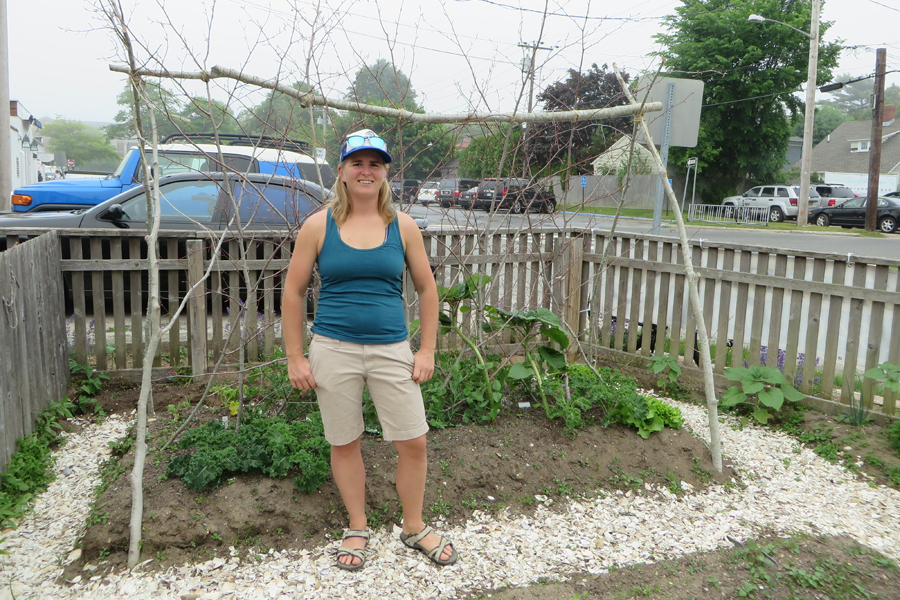Museum’s Colonial Kitchen Garden Seeks Community Involvement

Tucked behind the Pelletreau Silver Shop just off of Main Street in Southampton Village, a revived garden greets passersby with a quaint plot of land where one can view a selection of vegetables and flowers growing.
Emma Woodward created the Colonial Kitchen Garden in cooperation with the Southampton Historical Museum as part of her senior project for college. The garden was first sown in 2009 and has earned the admiration of many locals and out-of-towners. “The central spot makes it hard to miss,” Woodward said. “Sunflowers take over and people love them.” Surrounded by a wooden fence, the walkway in the garden was constructed with seashells, which Woodward said was a tradition used in the past. A resource that is still easy to find, the seashells added a nice touch of the local beach community while maintaining the charm and simplicity of the pre-colonial era.
Woodward discovered the plot of land at her mother’s suggestion—both of her parents had been presidents of the Southampton Historical Museum. When she first found it, the parcel was just an abandoned lot. Woodward reflected, “They needed something to happen here because it was just an overgrown space.” After an extensive clearing out of the grass and weeds, reading into traditional colonial gardening and a good deal of planting, the garden began to take shape. Growing up, Woodward witnessed her mother’s efforts in maintaining a garden, which sparked her own involvement.
Mainly, Woodward tends to the growth of vegetables in the Colonial Kitchen Garden. This includes onions, potatoes, carrots, beets, spinach, corn, beans, squash, cucumbers, peas, lettuce and herbs. One planting practice that she uses is called the Three Sisters, a traditional method in which beans, corn and squash grow in a symbiotic relationship. All of her gardening methods are organic.

Woodward, interested in expanding community participation with her garden, expressed, “I might think about getting more events going and seeking involvement with the elementary school which is right down the road.” She continued, “I’d like to see more events here where people can dress up and see the garden and learn about the pre-colonial history surrounding it.” For the near future, Woodward is looking to create a garden fund to help with the upkeep of the plants and is reaching out to community volunteers who would be willing to help her with garden maintenance.
The public can help support Woodward’s garden with a donation to the museum. The donations will help start the garden fund that will support the yearly cultivation of plants and vegetables. To make a contribution, visit southamptonhistoricalmuseum.org/special-events.
Assistant positions are also available for those who wish to volunteer their time and service in caring for the garden. Garden assistants would be required to meet once weekly with Woodward and learn the process she uses to maintain the garden throughout the season. Volunteers can receive a harvest-dependent stipend of produce and flowers weekly and will receive the opportunity to continue the harvest and maintenance of the garden when Woodward leaves for Boston to continue her education in September.
“I’m looking for people who are interested in helping me make this a sustainable project,” Woodward said. Interested individuals can contact Woodward at woodwarde27@gmail.com or get in touch with the Southampton Historical Museum.
“Growing plants is a good experience for everybody,” Emma said. “Don’t worry about the failure. Every year you get another chance to grow stuff and try again.”
Woodward host a garden party on Saturday, August 15, from 4 to 6 p.m. The event is open to the public.









